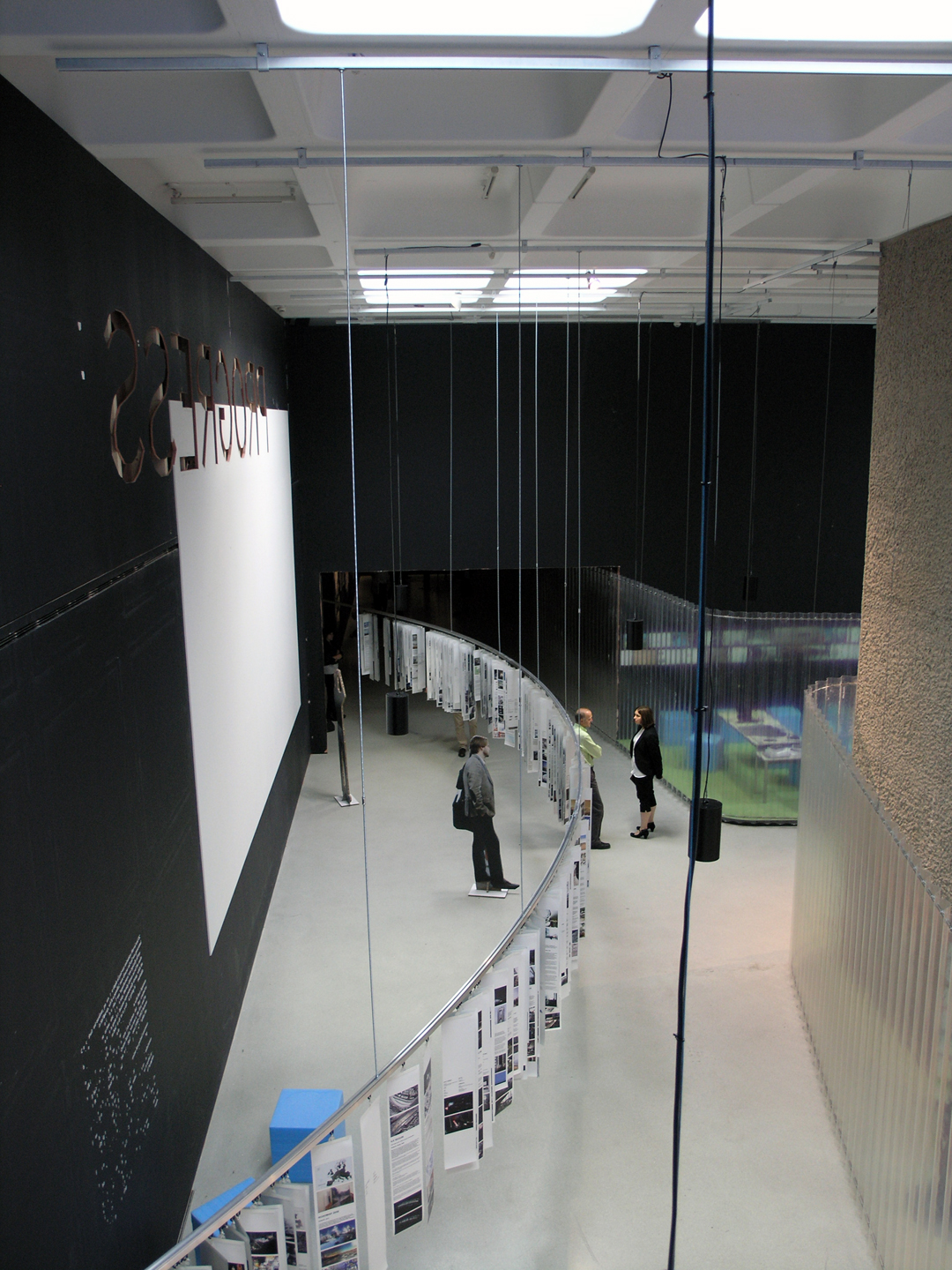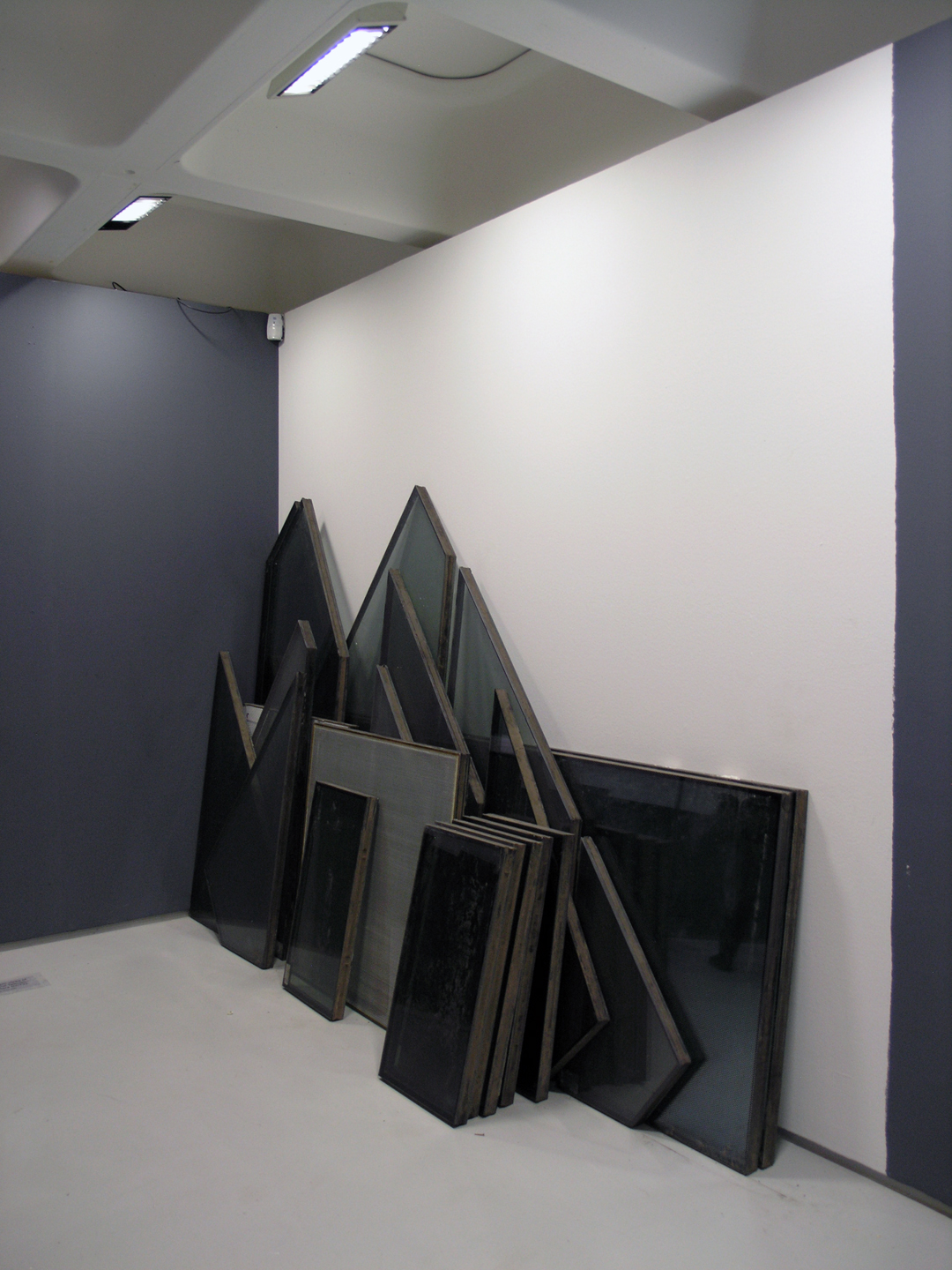-
di Marcel Mauer
OMA/Progress
Barbican Art Gallery, London
6 October 2011 – 19 February 2012
Curated by ROTOR
As I exit the gallery through the dark bronzed doors I have the clear impression that nothing really new can be reported from the OMA/AMO world. The more interesting matter, it would seem, is the young collective Rotor, curators for the exhibition OMA/Progress at the Barbican Centre from the 6 October 2011 until the 19 February 2012. The Belgian collective, founded in 2005, acquired visibility with the project Usus-Usures presented at the Venice Biennale in 2010. The work focused on the wear and tear of common building components revealing a genuine sensitivity for the material and symbolic values of the progressive weathering of architecture. Two years earlier, in 2008, Rotor presented Deutschland im Herbst at the Ursula Blickle Foundation near Karlsruhe working on the leftover material of 15 different industrial manufacturing processes.
At the Barbican, Rotor’s task is to make a portrait of OMA by combining the detail of a retrospective and the snapshot of a reality-show. The aim is to provide an “outsider view of the inside of a particular architectural office”: the exposition of archive research, and a particularly laborious one considering that the OMA archive accounts for 3.5 million documents and grows at a rate of more than 1,000 a day. The OMA production cycle is described through the rigorous and silent array of documents, products and leftovers resulting from a search through the immense body of work of OMA. In an attempt to display the projects with technical and scientific rigour, the selection of the search key words seems the only critical choice consciously made by Rotor. Walking through the exhibition rooms “white objects” follow “moving things”, “urban sight lines” are next to “Corian material samples” or “sustainable designs”. The issue of usability of an ever-expanding database is dramatically relevant, especially in relation to the practice of architecture, which has always been burdened by the archiving obsession of architects’ infinite egos. These considerations must then be combined with the explicit effort undergone by OMA of reducing the intellectual waste of its hyperactive production cycle. This has resulted in recycling wherever possible, as much as possible. In light of this, OMA had already developed a perfectly sound communication style to present their work: the book/exhibition Content (2003) was conceived as an accumulation of heterogeneous and raw materials arranged with editorial brutality. At first, this seems to match Rotor’s curatorial direction as technical drawings, material samples, sketches, emails, videos, postcards and draft renderings are all diligently arranged in an explicitly unfinished environment.
Yet if OMA’s objective is the communication of contents – and thus form becomes a consequence – in Rotor’s work form is used as the primary search parameter while the content is subject to multiple interpretations. Although united by the reference to the ready-made, the essential and elegant language of Rotor and the excessive and Pop one of OMA fail to find a synthetic solution. The curating choice – only apparently neutral – of communicating OMA works without a critical position results in a Wunderkammer rather than a scientific description. The end result is ambiguous as Rotor’s work is neither an ideological critique nor a promotional propaganda but simply an autonomous artistic gesture.
London, 6 October 2011
***
Marcel Mauer is an architect and works in London


